India – Pakistan, a difficult relation
The terrorist attack on April 22 in the popular tourist town of Pahalgam in the union territory of Jammu and Kashmir killed at least 26 people in the Himalayan tourist destination. The Muslim-majority region is claimed by both India and Pakistan and has been the site of several wars, an insurgency and diplomatic standoffs.

After the terrorist attack, various shootings have been recorded at the line of control. The latest exchange of shots was on May 10. India’s and Pakistan’s top brass have held talks. India has accused Pakistan’s Interagency Intelligence Service of involvement in the attack, carried out by the Lashkar-e-Taiba group. Pakistan denies this. Islamabad has said it has intelligence that India intends to launch military action and retaliated by halting all border trade, closing its airspace to Indian carriers and expelling Indian diplomats. India halved the staff of the embassy in Islamabad, suspended an agreement on the allocation of water and the issuance of visas to Pakistanis. New Delhi has also declared the military advisers of the diplomatic mission of the Islamic Republic persona non grata.
Why is Kashmir a flashpoint between India and Pakistan?
Kashmir is claimed in full by India and Pakistan but administered only in part by each since they were partitioned following independence from Britain in 1947. The countries have fought many wars over it.
Kashmir, the northernmost region of South Asia, has been the subject of a longstanding territorial dispute between India and Pakistan, two South Asian powerhouses. When British India was partitioned in 1947 into India and Pakistan, the princely state of Jammu and Kashmir, with a Muslim-majority population but a Hindu ruler, Maharaja Hari Singh, became a point of contention.
The Maharaja initially chose independence but acceded to India under pressure from tribal incursions supported by Pakistan, sparking the first Indo-Pakistani war (1947-48). The United Nations brokered a ceasefire in 1949, which was agreed upon by both conflicting parties, establishing a Line of Control (LoC), a de facto border that divides the region.
India controls Jammu, Kashmir Valley, and Ladakh (about 45 percent of the region), Pakistan controls Pakistan-administered Kashmir and Gilgit-Baltistan (about 35 percent), and China controls Aksai Chin (about 20 percent) following the 1962 Sino-Indian War. Both India and Pakistan claim the entire region of Jammu and Kashmir, which has been the source of conflict, bloodshed and intermittent border skirmishes.
The dispute fuels broader India-Pakistan rivalry, with both nations being nuclear powers, raising global concerns about escalation and its global repercussions. Mutual distrust and domestic political pressures in both countries make compromise difficult, as well as strategic interests like water resources from the Himalayan Rivers.
The second Indo-Pakistani war (1965) broke out due to Pakistan’s military infiltration in India-controlled Kashmir and lasted for a month. It resulted in major armored battles and thousands of deaths and was ended with the Tashkent Agreement, again without a clear victor.
The next major conflict was the Siachen War (1984-2003), over the disputed 2,500 square kilometer Siachen Glacier region in northern Kashmir. The conflict was triggered after India reportedly seized the said glacier with its tributary glaciers, all major mountain passes and border ridges. After almost two decades of intermittent fighting and thousands of deaths, primarily due to frostbite, avalanches and other natural hazards, the war ended with a ceasefire.
The Kargil War (1999) started with Pakistan’s military infiltration in the Kargil district of Ladakh in India-controlled Jammu and Kashmir. The move led to an Indian counter-offensive, and the war ended after three months with hundreds of deaths on both sides. Pakistan withdrew due to international pressure.
In the 21st century, the two sides had at least ten border skirmishes in which sometimes a handful, sometimes hundreds of soldiers and civilians were killed. In 2016, after 19 Indian soldiers were killed in Uri, India launched “surgical strikes” across the Line of Control – the de facto border between India and Pakistan – targeting militant bases. In 2019, the Pulwama bombing, which left 40 Indian paramilitary personnel dead, prompted airstrikes deep into Balakot – the first such action inside Pakistan since 1971 – sparking retaliatory raids and an aerial dogfight.
Military actions and operations this time
The terrorist attack on April 22 in the popular tourist town of Pahalgam in the union territory of Jammu and Kashmir killed at least 26 people in the Himalayan tourist destination, which led to a dramatic escalation of tensions between the two arch-rivals.
Indian media pointed to the TRF group, which claimed responsibility. Indian authorities contend the TRF is a proxy for Lashkar-e-Taiba, a Pakistan-based terrorist organization, pointing fingers at Islamabad as indirectly responsible for the attack. Pakistan denied any role in the terrorist attack and responded to India’s move by abandoning the Shimla Agreement, the peace treaty that ended the major Indo-Pakistani war of 1971.
Just a day after the attack, India annulled the 65-year-old Indus Water Treaty (IWT) on the use of water resources of the Indus River and its tributaries. Under that agreement, India received control of 30 percent of the total water, while Pakistan received 70 percent. The importance of the Indus for Pakistan is similar to the importance of the Nile for Egypt, as over 90 percent of agriculture depends on this river.
Two weeks after a deadly militant attack on tourists in Indian-administered Kashmir, India launched a series of strikes on sites in Pakistan and Pakistan-administered Kashmir. The Indian defense ministry said the strikes – named “Operation Sindoor” – were part of a “commitment” to hold “accountable” those responsible for the 22 April attack in Pahalgam, Indian-administered Kashmir, which left 25 Indians and one Nepali national dead. But Pakistan, which has denied any involvement in that attack, described the strikes as “unprovoked”, with Prime Minister Shehbaz Sharif saying the “heinous act of aggression will not go unpunished”.
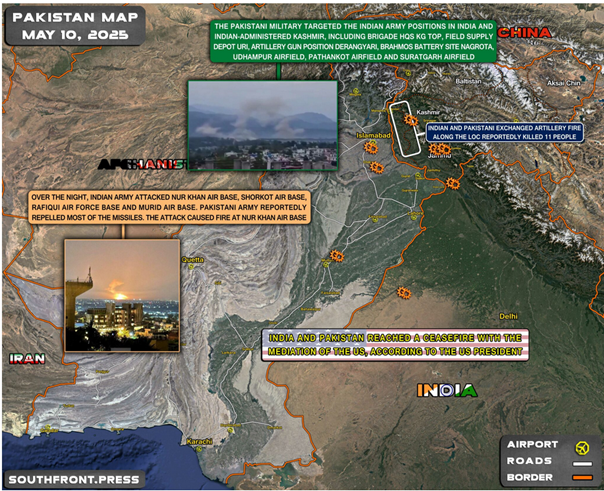
In late April, a major military clash broke out between India and Pakistan, with the former launching synchronized missile strikes on positions across Pakistan and Pakistan-administered Kashmir that it described as “terrorist infrastructure.”
Pakistan said it had shot down five Indian Air Force jets, a claim not confirmed by the Indian side. It was followed by heavy artillery exchanges along their de facto border. Pakistan said Indian strikes had killed at least 26 civilians and wounded 46 others, and India said Pakistani artillery fire killed 10 civilians and injured 48 others along the Line of Control (LoC).
Pakistan announced that its Rangers captured an Indian Border Security Force in the Ferozepur sector, on the internationally-recognized border between the two countries. Pakistan began to deploy large military reinforcements, including main battle tanks and heavy howitzers, along the LoC. With no real efforts to de-escalate, India and Pakistan appear to be on the course towards a major confrontation.
Tensions between India and Pakistan continue to mount as a result of a deadly terrorist attack, with the two nuclear powers bracing for a confrontation. India acted harshly, expelling Pakistani diplomats, closing border crossings and even halting a vital water-sharing agreement. The last move, never before taken even during full-scale wars. From its side, Pakistan closed its airspace to Indian flights and suspended bilateral trade.
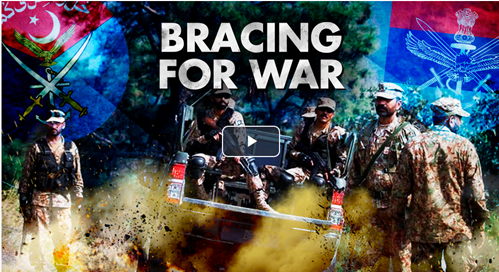
India And Pakistan Brace For War
South Front May 1, 2025
India and Pakistan have blamed each other for escalating tensions as the US and others countries urge both sides to de-escalate. On Thursday May 6, India’s army accused Pakistan of launching drones and missiles on three military bases in India and Indian-administered Kashmir, which Islamabad denies. Pakistan said earlier it had shot down 25 Indian drones – India has not commented. Pakistan says 31 people have been killed and 57 injured by air strikes in Pakistan and Pakistan-administered Kashmir, and firing along the Line of Control, since Wednesday morning. Meanwhile, India’s army says at least 16 civilians were killed by Pakistani shelling on its side of the de facto border. India says the initial missile strikes were a response to a deadly militant attack on Indian tourists in Pahalgam last month – Islamabad denies involvement.
Pakistan-India fighter jet “dog fight” was one of largest and longest in recent aviation history, source says. The “dog fight” between Pakistani and Indian fighter jets, which Pakistani officials say downed five Indian planes, was one of the “largest and longest in recent aviation history,” a senior Pakistani security source told CNN. A total of 125 fighter jets battled for over an hour, with neither side leaving its own airspace, according to the source who detailed that the missile exchanges were happening at distances sometimes greater than 160 kilometers (100 miles).
Some special military features of this conflict
At the time of the Pakistani attack, Indian media confirmed that the country activated its S-400 systems to intercept multiple drones and missiles. Later, photos that surfaced online showed the debris of the 9M96E2 anti-aircraft missile, which can be fired by the system, inside Indian territories. The missile, which is also equipped with an active radar homing seeker, can engage aerial targets at an altitude of 30 kilometers with a range of 120 kilometers.
India purchased four S-400 squadrons from Russia for $5.43 billion in 2018. Each squadron is composed of two batteries. Each battery, or firing unit, is equipped with six launchers, a radar and a control center with 128 missiles. A squadron has a total of 16 vehicles.
Under the deal, the country got 60 launchers with around 6,000 missiles including 9M96E2 and 40N6E, as well as 48N6E2 with a range of 200 kilometers and 48N6E3 with a range of 240 kilometers. The 40N6 was most likely launched at a high-value target, either to intercept a heavy artillery rocket or even a ballistic missile. India responded to the Pakistani attack by targeting air defenses in the east of the country with drones. Indian air defenses reportedly intercepted 50 drones and eight missiles.
May 11, India has shot down several Pakistani aircraft, preventing them from entering the country’s airspace, Air Marshal Avadesh Kumar Bharti said at a briefing. “Their planes were not allowed to fly over our border,” he said. “We definitely shot down several planes, and they have suffered losses on their part.”
India’s Russian-made S-400 air defense systems used their longest-range missile, the 40N6, while repelling a Pakistani attack on the country’s northern and western regions over the night of May 7 and 8, according to photos posted to social networks. The 40N6 can engage aerial targets at an altitude of 30 kilometers with a maximum range of 380 kilometers. The missile is equipped with an active radar homing seeker.
May 10, India delivered several missile strikes against three air force bases in Pakistan, Geo TV reports, citing Pakistan’s Director General of Inter Services Public Relations, Lieutenant General Ahmed Shareef Chaudhry. Missile strikes targeted Nur Khan, Murid and Rafiqui airbases. May 11, India’s military says it downed “a few” Pakistani aircraft during its conflict with Islamabad, although it says it couldn’t give exact numbers as the wreckage of the planes had fallen outside India’s border.
The Indian military used Israeli-made air defense systems to repel Pakistani drone and missile attack during the last confrontation. Photos showed the wreckage of what appears to be Barak 8 and Python-5 anti-aircraft missiles, which are used in the Israeli-made MR-SAM and SPYDER-SR medium-range air defense systems, respectively.
The MR-SAM can engage aerial targets with a range of 70 kilometers using the Barak 8 missile, which is guided by active radar homing. Meanwhile, the heat-seeking Python-5, originally an air-to-air missile, can engage targets as far as 40 kilometers when launched from the SPYDER-SR.
Indian ground forces operate five MR-SAM regiments, made up of 40 launchers. An additional 18 squadrons with 140 launchers are in service with the air force, which also operates 18 SPYDER-SR.
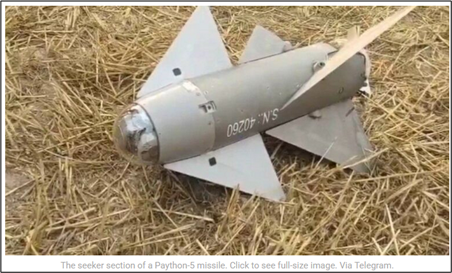
India’s BrahMos supersonic cruise missile, which was developed in cooperation with Russia, has apparently outperformed the SCALP-EG cruise missiles the country purchased from France during the recent conflict with Pakistan.
The Indian military used both BrahMos and SCALP-EG missiles to attack Pakistani targets during the conflict. However, evidence suggests that the first performed better. India purchased an undisclosed number of SCALP-EG, the French codename for the Storm Shadow missile, in 2016 as part of the Dassault Rafale fighter jet deal.
The SCALP-EG is a Franco-British low-observable, subsonic, air-launched cruise missile developed in the 1990s by Matra and British Aerospace, and now manufactured by MBDA. It features a GPS-aided inertial navigation system with a terrain profile matching system. For terminal guidance, the missile is equipped with an imaging infrared scene-mapping area correlator system. India received a downgraded export version with a range of 250 kilometers. The Rafale fighter jets of the Indian Air Force (IAF) are the main carrier of the missile.
On the other hand, the BrahMos was jointly developed by the Indian Defence Research and Development Organisation and the Russian Federation’s NPO Mashinostroyeniya on the basis of the P-800 Oniks, also during the 1990s.Just like the Russian-made Oniks, the BrahMos can reach a speed of up to Mach 3 with the range of its latest version reaching over 800 kilometers. Upon approaching its target, the missile is capable of flying as low as 3-10 meters to avoid detection.
The BrahMos relies on a complex guidance system built around a satellite-aided inertial navigation system and a jam-resistant active radar homing seeker. While it was mainly designed to engage water-born targets, it can strike ground-based targets as effectively.
The missile can be launched from land, sea and air. The air-launched version, fielded by the IAF’s Su-30MKI, is said to have a range of 500 kilometers, double that of the SCALP-EG.
During the last conflict, Pakistani media reported that multiple SCALP-EG missiles were intercepted by the country’s air defenses. On the other hand, there were no reports of any BrahMos failing or being shot down, which suggests that the missile performed better.
This result is not surprising. The Oniks performed very well during the Russian special military operation in Ukraine, with Ukrainian military officials even admitting that it is nearly impossible to intercept. On the other hand, SCALP-EG missiles supplied to Ukraine were nearly completely neutralized by Russian air defenses and electronic warfare means.
Of course, the two missiles are not of the same class, for example the BrahMos has an anti-ship capability, but still they can be compared in the context of the recent Indian-Pakistani conflict as they were both employed from air to strike land targets.

Pakistan used everything, from loitering munitions to precision-guided artillery rockets and air-launched ballistic missiles in attacks on India.
Indian media didn’t provide any information on the performance of Israeli-made air defense systems. However, it praised the Russian-made S-400 long-range air defense system, locally dubbed “Sudarshan Chakra,” crediting it with intercepting an array of aerial targets.
Pakistan claimed it shot down five Indian planes and at least one drone: three Rafale fighter jets, one MIG-29 fighter aircraft, one Su-30 fighter jet and one Heron drone. Pakistan also claims its J-10C fighter jets jammed Indian Rafales. The Indian Embassy in China attempted to label it as “disinformation.” However, CNN quoted a high-ranking French intelligence official as saying that one Indian Air Force Rafale was shot down, marking what would be the first known loss of the advanced French-built warplane in combat.
Pakistan’s Defense Minister Khawaja Muhammad Asif said on May 4 that the Pakistani Air Force (PAF) had jammed four Indian Rafale fighter jets during an attempted incursion.
Pakistani media said that the attempted aerial incursion took place over Kashmir over the night of April 29 and 30 and Indian Air Force (IAF) fighter jets were jammed by J-10C fighter jets of the PAF. An aerial confrontation between the two sides was indeed reported at the time.
The J-10C can be equipped with an electronic warfare pod with unknown capabilities, dubbed KG600. It is unclear however if this was the system employed during the coronation over Kashmir. The PAF has received 20 fighter jets of this type from China since 2022.
The PL-15 is China’s answer to the US AIM-120D AMRAAM (advanced medium-range air-to-air missile) which is an all-weather, beyond-visual-range (BVR) missile. It has a range of 200 to 300 km (124 to 186 miles), although the export version is 145 km (90 miles). It is assumed Pakistan has the export model. The PL-15 is pretty fast. Once launched, its speed is around Mach-5.
By way of contrast, the French MICA air to air missile has a significantly shorter range, around 60 to 80 km (37 to 50 miles). Thus, the Chinese PL-15 as a stand-off weapon has a significant advantage. That seems to have paid off in the recent encounter.

The IAF operates 36 Rafales. These are multi-mission platforms suitable for all combat aviation missions: air superiority and air defense, close air support, in-depth strikes, reconnaissance, anti-ship strikes and nuclear deterrence. The fighter jets, which were delivered from France between 2020 and 2022, are equipped with the SPECTRA electronic warfare suite, which is supposedly capable of protecting the fighter jet against airborne and ground threats.
India’s Rafales were armed with munitions capable of hitting targets within a range of more than 200 kilometers, most likely SCALP (Storm Shadow) cruise missiles, at the time of the confrontation, while the J-10Cs were carrying PL-15 air-to-air missiles with a range of up to 300 kilometers.
The Rafales also had MICA air-to-air missiles. At least one of these missiles was found near the crash site of the first Rafale that was downed. That Rafale had a tail designation of BS-001, meaning it was the first Rafale delivered to the Indian air force. BS means single seat version.
India has lost its top fighter jet, the Rafale EH. Three Rafale jets were shot down. In addition, at least one Sukhoi and one MIG plus a large Israel reconnaissance drone were destroyed by Pakistan’s air force.
Regarding air fights, the US Air Force has put most of its bets on two capabilities:
- stealth for platforms such as the F-22 and F-35, and
- long-range interdiction with air-to-air missiles in warfare described as “beyond visual range” (BVR)
Consequently, fighters such as the F-35 have traded off maneuverability to emphasize stealth, and have long-range air-to-air missiles to support BVR encounters.
The Rafale is not a stealth platform and, while in many ways technologically advanced, it is not as BVR capable as Chinese-designed jets and air-to-air missiles. Furthermore, even the AMRAAM seems to fall short of the mark in any competition, meaning that the AMRAAM will need to be replaced with a longer-range and faster air-to-air missile.
Russia also has a BVR air-to-air missile, the R-77 which is being upgraded. A new version, R-77M, designed for Russia’s new Su-57 fighter, has a dual pulse motor (like China’s PL-15) and AESA radar. Quite possibly it incorporates Chinese technology. Russia also appears to have a scramjet-powered version of the R-77. Nothing is known of the range of either missile, although the earlier R-77 was inferior in range to AMRAAM.
What happened to India in the latest firefight is bad news for NATO, which appears to be falling behind technologically – and it is a warning to the United States to speed up development of an AMRAAM replacement.
While the US has a new replacement for AMRAAM, designated as the AIM-260 JATM (joint advanced tactical missile), as of now it is in low-rate production and has not achieved initial operational capability. Supposedly, it has a range of 200 km (124 miles), putting it at the low end compared to the PL-15.
There is still a lot more to be learned about the latest encounter between the Pakistani and Indian air forces. There may be more bad news for the West.
Kashmir air combat experience: It will take Years for India to Catch Up to Pakistan Now and BVR Makes Dogfights Obsolete
As more details emerged from the air combat between India and Pakistan, military experts have taken a deep dive and found a lot of interesting facts, making “the French sob and the West alert”. Aside from the first battlefield showdown between the Chinese PLA and NATO equipment (plus 2 Russian jets), how the Pakistani achieved such success was more intriguing than the headline hypes.
In recent years, Russia, China and the US have shared a common strategic view when it comes to aerial combats though with different approaches – BVR (Beyond Visual Range) capabilities. All of the Indian jets were shot down in her own territory, including one drone (all BVR strikes). The PL-15 air-to-air missile used in this battle is believed to be the “export version” (much shorter range) hence the use of data link and the superior air combat command system of Pakistan are the scary part, and likely why both sides agreed to a truce because India (and the US) knew it would be pointless to mobilize the army when your air force can’t even pose a threat.
To wrap up, here is what was involved and actually transpired:
Beidou + AEW (Air Early Warning) + EW (Electronic Warfare) + the systemic and advanced use of the data links. Clearly the PLA system and training prevailed, and it will likely take India years to simply catch up. (Note the PL-15 and HQ-9 are not even the latest PLA equipment) The military experts in the West most definitely will use this case study to further examine / modify their current and future plans.
May 10, Praise for US as India and Pakistan agree to ceasefire

While the world fears a major escalation between the two nuclear powers, experiences with previous border skirmishes give optimism that the conflict will remain limited in nature.
Many countries have urged the two sides to exercise restraint, including the Islamic Republic of Iran. Iran’s foreign ministry “expressed deep concern over the escalating tensions” and urged both countries to “exercise restraint.” UN Secretary-General António Guterres quickly called for “maximum restraint” – a sentiment echoed by the European Union and numerous countries, including Bangladesh. British Prime Minister Keir Starmer urged “dialogue” and “de-escalation”. US President Donald Trump – who was one of the first to respond – told reporters at the White House that he hoped the fighting “ends very quickly”. US Secretary of State Marco Rubio, meanwhile, said he was keeping a close eye on developments.
After four days of cross-border strikes, India and Pakistan have agreed to a full and immediate ceasefire. Posting on his Truth Social platform, the US President Trump said the truce had been brokered by the US. May 10, President Trump announced:
After a long night of talks mediated by the United States, I am pleased to announce that India and Pakistan have agreed to a FULL AND IMMEDIATE CEASEFIRE. Congratulations to both countries on using Common Sense and Great Intelligence. Thank you for your attention to this matter! …
Trump and his cabinet have thus achieved a notable and laudable victory. US mediation has helped to de-escalated a crisis in South Asia that had threatened to turn into a full-fledged (nuclear) war.
Pakistan‘s Foreign Minister then confirmed the agreement had been reached by the two countries – adding that “three dozen countries” were involved in the diplomacy. Later, Ishaq Dar singled out his UK counterpart as someone who “played a key role”; David Lammy responded by urging both India and Pakistan to “sustain” the ceasefire. Indian defence officials held a short briefing where they said the navy, army and air force would adhere to the ceasefire but would also remain vigilant and defend India if necessary.
Ceasefire holds: A ceasefire between India and Pakistan appears to be holding on Sunday, May 11, despite accusations of violations by both sides. Explosions rocked several parts of Kashmir hours after the truce was announced on Saturday, but both countries have reiterated their commitment to the agreement.
Overnight diplomacy: US President Donald Trump said a night of talks mediated by Washington helped secure the deal, after the White House received alarming intelligence on the conflict, according to US sources. Trump says he’s “proud” of the US role bringing the fighting to an end — although India has downplayed US involvement in the talks.
In early May, Russian Foreign Minister Sergey Lavrov confirmed to Pakistani Foreign Minister Ishaq Dar Moscow’s readiness to help resolve the standoff between New Delhi and Islamabad, the Russian Foreign Ministry said following a telephone conversation between the two officials. The Russian side stressed its readiness to contribute to a political settlement of the situation.
Pakistani Ambassador to Moscow Muhammad Khalid Jamali considers Russia an indispensable force in resolving the conflict between the two nuclear neighbors, Pakistan and India. Also, he shared when the two conflicting sides might need Moscow as a venue for talks. Pakistan has been already in touch with the Russian Ministry of Foreign Affairs.
Since the last meeting between Russian President Vladimir Putin and Pakistani Prime Minister Shahbaz Sharif in Astana last year, they have had many exchanges of visits. Due to Russia’s special relations with both countries, Russia has a great advantage in reducing tensions between the two countries.
The ceasefire between India and Pakistan appears to be holding on Sunday despite mutual accusations of violations, as media reported signs including airspace reopening in Pakistan and the resumption of businesses in border areas, while both sides reiterated their commitment to the truce.
What is ahead? After the situation appears to have de-escalated, the question becomes whether the ceasefire can last and how can the two sides settle the issue. The Foreign Office of Pakistan on Sunday said in a post on X that “Pakistan remains committed to faithful implementation of ceasefire between Pakistan and India.” Also on Sunday, Indian Prime Minister Narendra Modi held a high-level meeting with defense minister Rajnath Singh, external affairs minister Subrahmanyam Jaishankar and tri-services chiefs.
Some political assessments
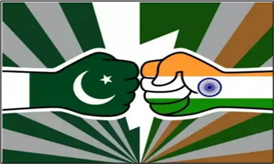
Opinions are mixed about who came out on top in the latest Indo-Pak conflict but one thing is for certain and it’s that India’s new doctrine is the lasting takeaway.
According to reports, India will regard all future acts of terrorism as acts of war by Pakistan, which will result in cross-border strikes. That might not deter Pakistan, whose military leadership relies on the unresolved Kashmir Conflict to legitimize its outsized influence but it could still make them think twice about orchestrating future attacks.
Moreover, the Indus Waters Treaty remains suspended despite the fragile ceasefire / ”understanding” between them, which collectively contributes to the new reality in South Asia. Reports also suggest that it was Pakistan, not India, which asked the US to diplomatically intervene in the latest conflict. About that, India denied that any mediation took place despite the US’ claims, but the US probably passed along messages from Pakistan to India on Islamabad’s behalf during talks between their officials.
The main Western goal by fomenting this war is to destabilize the Eurasian region. A new armed conflict between India and Pakistan is beginning in the disputed region of Kashmir. The main reason for the current friction was a terrorist attack that occurred on April 22 in the Pahalgam region of Indian-controlled Kashmir.
The world is concerned about this escalation because both India and Pakistan have nuclear weapons. In addition, both countries have a problem with military inexperience. Despite having fought each other militarily for years, Pakistan and India have rarely participated in high-intensity armed conflicts and are not adapted to the complexity of contemporary warfare.
The fact that several Indian fighter jets were shot down in the first hours of the conflict already shows the military inexperience of the involved agents. This increases concerns about the possible use of nuclear weapons, since it is easier to resort to extreme resources than to maintain long-term tactical planning in a prolonged war.
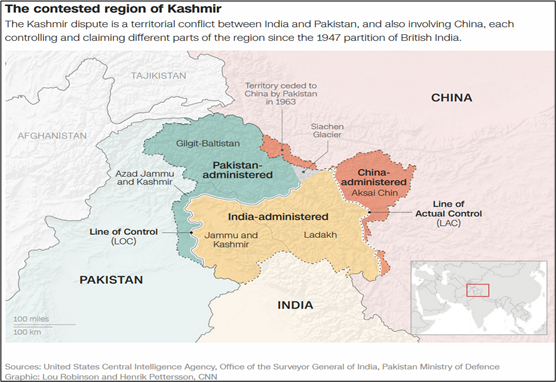
At the international level, a war in South Asia would be disastrous for multipolar interests. The conflict delays the proposal to create a military cooperation agreement within the BRICS framework, since a founding country of the BRICS (India) is in a situation of open conflict with a country allied with another member of the organization (Pakistan-China). In addition, Sino-Pakistani cooperation is particularly affected, since Pakistani territory is a key factor in the logistics of China’s Belt and Road Initiative.
In practice, the conflict is of interest only to the West, since the major Eurasian powers will be affected by the hostilities. This is a conflict that delays the geopolitical transition towards multipolarity and favors Western interests in destabilizing the Eurasian region. It is best for both sides to calm down and start negotiations, otherwise there will be long-term negative consequences.
The well-known American commentator Larry Johnson (ex-CIA analyst) wrote: “Did Western Intelligence Play a Role in the Latest Terrorist Attack in Kashmir?” Johnson wants to draw attention to some interesting events:
The timing of this terrorist attack in Pahalgam (April 22) – coming on the heels of Vice President JD Vance’s visit to India — raises some uncomfortable questions that merit an answer… Were Western intelligence agencies involved? For what purpose: sparking tensions with China and creating turmoil within BRICS.
Pakistan’s Defense Minister, Khawaja Muhammad Asif, admitted that Pakistan has been supporting and funding terrorist groups for about three decades, describing this as “doing the dirty work for the United States and the West, including Britain.” He acknowledged that this was a “mistake” and said Pakistan has suffered greatly as a result, especially by aligning with the West during the Soviet-Afghan war and the post-9/11 US-led war on terror. Asif stated that if Pakistan had not joined these efforts, its international record would have been “unimpeachable.” Asif emphasized three key points:
Collaboration with Western Powers: Asif stated, “We have been doing this dirty work for the United States for about three decades, you know, the West, including Britain.” This comment was made in the context of discussing Pakistan’s historical role in supporting Western-led initiatives, which he suggests have contributed to the current challenges with terrorism.
Training of Mujahideen: Reflecting on Pakistan’s past decisions, Asif acknowledged that the country had trained Mujahideen fighters during the Afghan-Soviet war, stating, “We prepared them and now they have become terrorists.” He emphasized that Pakistan should not have engaged in such activities at the behest of other nations.
Critique of U.S. Military Actions: Asif has criticized the United States for its military interventions, noting that Pakistan has suffered due to its alliance with the U.S. He pointed out that the U.S. left behind high-tech weapons in Afghanistan, which have contributed to the rise in terrorism within Pakistan.
The attack in Pahalgam, at a minimum, was designed to disrupt further development of the area as a tourist destination. Still, in light of Asif’s remarkable confession, I cannot rule out something more nefarious by my former outfit or by Britain’s MI-6.
The conflict between Pakistan and India heated up quickly on Tuesday, with India hitting alleged terrorist camps in Pakistan and Pakistan retaliating with artillery and missile strikes. Iran’s Foreign Minister Aragchi was in the region, trying to mediate. No doubt, he was doing this with the full backing and support of both Russia and China.
Russia is particularly sensitive to the likelihood that Western intelligence agencies are working behind the scenes to stoke the fires. More than 30 years ago, in December 1994, the First Chechen War, kicked off when Russian forces launched a major offensive to suppress Chechnya’s attempt to break away from the Russian Federation. While the initial conflict allegedly was rooted in Chechen nationalism and separatism, Western intelligence agencies were involved in providing covert aid to the Chechens. The Soviet Union may have disappeared but the Cold War lived on.
In 1999, there were several “coincidences”. On March 12, Bill Clinton welcomed Poland, Hungary and the Czech Republic into NATO… an act strenuously protested by Moscow. Twelve days later, after NATO moved eastward towards Russia, NATO launched an aerial bombing campaign known as Operation Allied Force, against Russia’s ally, Serbia. Then came the Second Chechen War, which officially began on August 7, 1999, following an invasion of the Russian province of Dagestan by Chechen fighters led by Shamil Basayev and Ibn al-Khattab.
This event, along with a series of apartment bombings in Russian cities blamed on Chechen militants, triggered a full-scale Russian military campaign against Chechnya. Yet another “coincidence” that on August 9, 1999, President Boris Yeltsin appointed Vladimir Putin as Prime Minister. Four months later, on December 31, 1999, Yeltsin resigned and handed over power to Putin, who became Acting President.
With the benefit of hindsight, it seems to be now clear that the US and NATO were engaged in a coordinated campaign to destroy Russia. This campaign came to a head in 1999. Russian leaders awakened to the threat and realized they needed someone other than Yeltsin to confront the Western subversion. It took Russia 10 years, under Putin’s leadership, to defeat the Chechen terrorist campaign… a campaign, which obviously was aided by Western intelligence.
Pakistan close to use nuclear weapons?
Pakistani Air Forces showed the high-quality capability (Chinese technology) over Indian Air Forces, as analyzed above in this article. This technology gap between PAF (Chinese J-10C) and IAF (French Rafale) was really alarming and a significant reason in ceasefire talks.
However, CNN claimed that Vance called Modi after receiving “alarming intelligence”, which hints that Pakistan told the US that it might use of nuclear weapons in desperation, likely due to India bombing multiple bases across the country. If that’s indeed what happened, then it would imply that Pakistan believed that it was losing, thus lending credence to perceptions that India got the best of it. After all, the aforesaid strikes weren’t intercepted, which shows that India achieved escalatory dominance over Pakistan.
Although some Pakistani drones and missiles hit targets inside of India, Russia’s S-400s were praised by national media for neutralizing many of the incoming attacks. Likewise, the jointly produced BrahMos supersonic cruise missiles were used in India’s successful attacks against Pakistani bases, thus proving that Russian military equipment is truly some of the best in the world. By contrast, Pakistan’s mostly Chinese equipment fell short of some observers’ lofty expectations, which reflects negatively on both.
To wrap up, while opinions are mixed about who came out on top in the latest Indo-Pak conflict, India arguably won in the sense how it punished Pakistan for the Pahalgam terrorist attack by bombing multiple bases, the Indus Waters Treaty remains suspended, and a new military doctrine has entered into effect. Despite recent military indications, a re-eruption of hostilities at some future time can’t be ruled out.

Indian Diplomacy: Combating Terroristan
DD India, May 10, 2025
Discussion between foreign affairs expert, Dr. Sreeram Chaulia, and the Director of Milli Chronicle, Zahack Tanvir, on the reasons for Pakistan becoming the ground zero of religious extremism and terrorism over the past several decades, the role of foreign powers like the USA, China and Turkey in fanning Pakistan’s jihad culture, ways in which the virus of Islamist hatred and violence emanating from Pakistan can be contained, and antidotes to the global cancer being spread by Pakistan.


